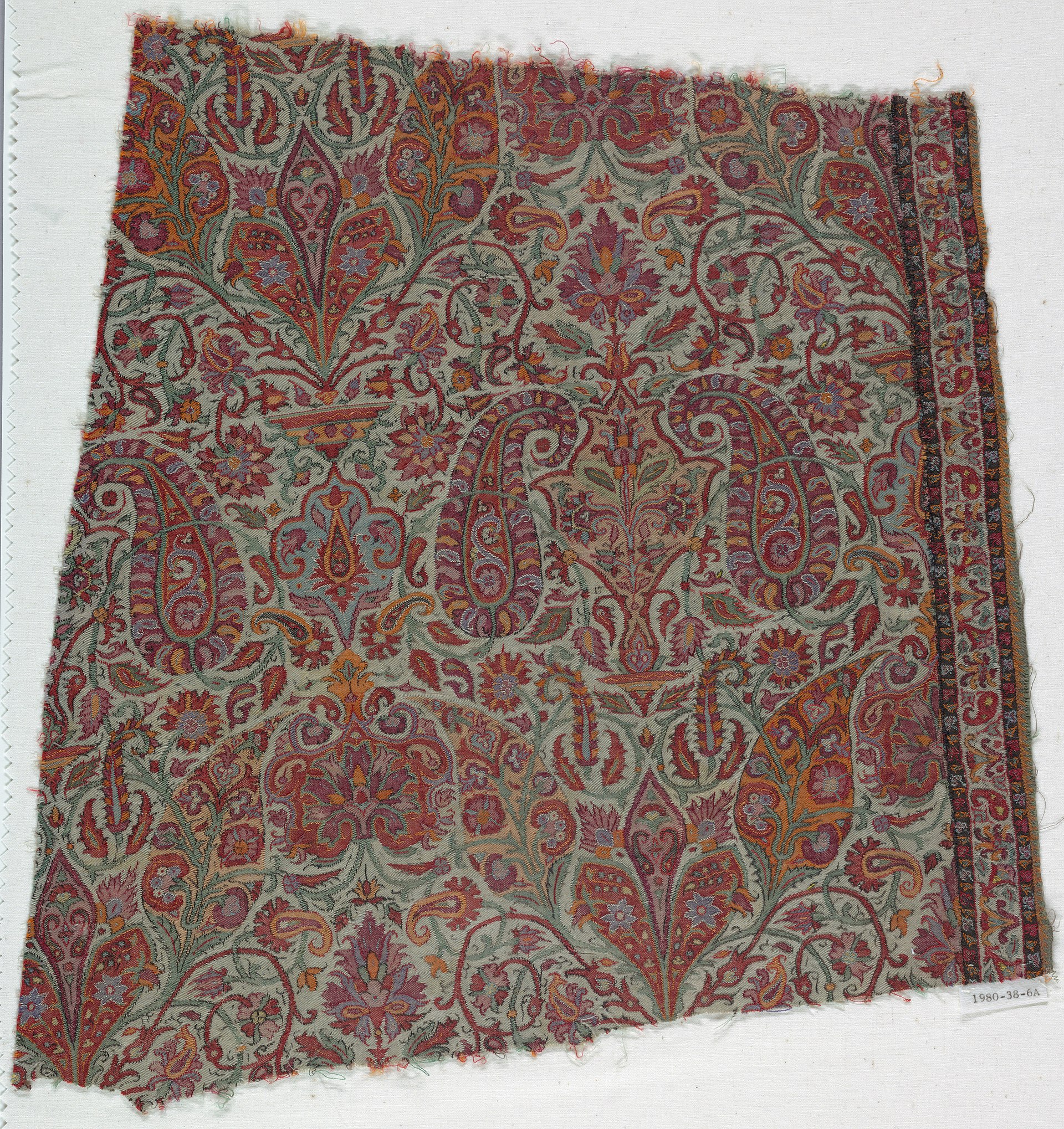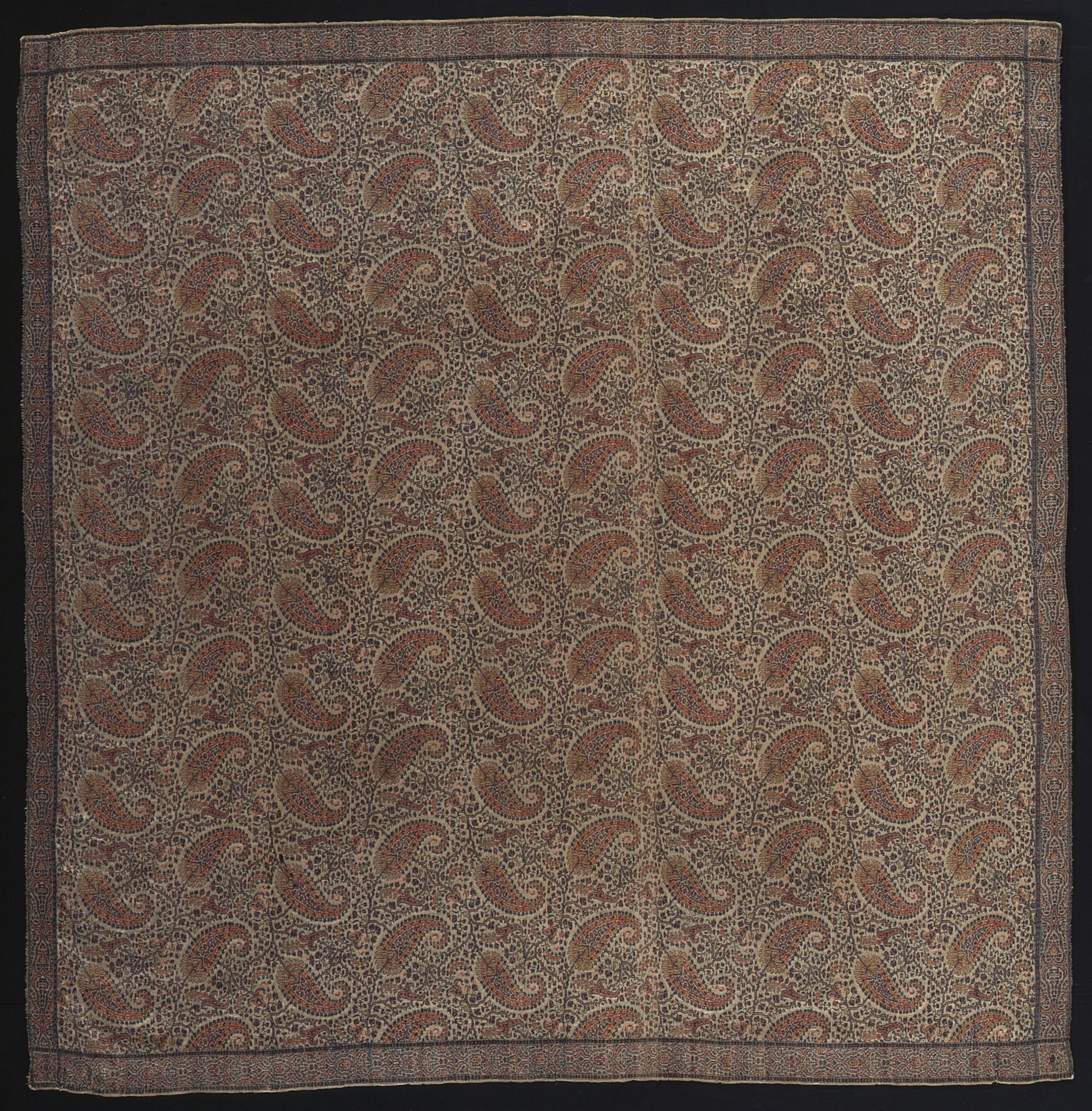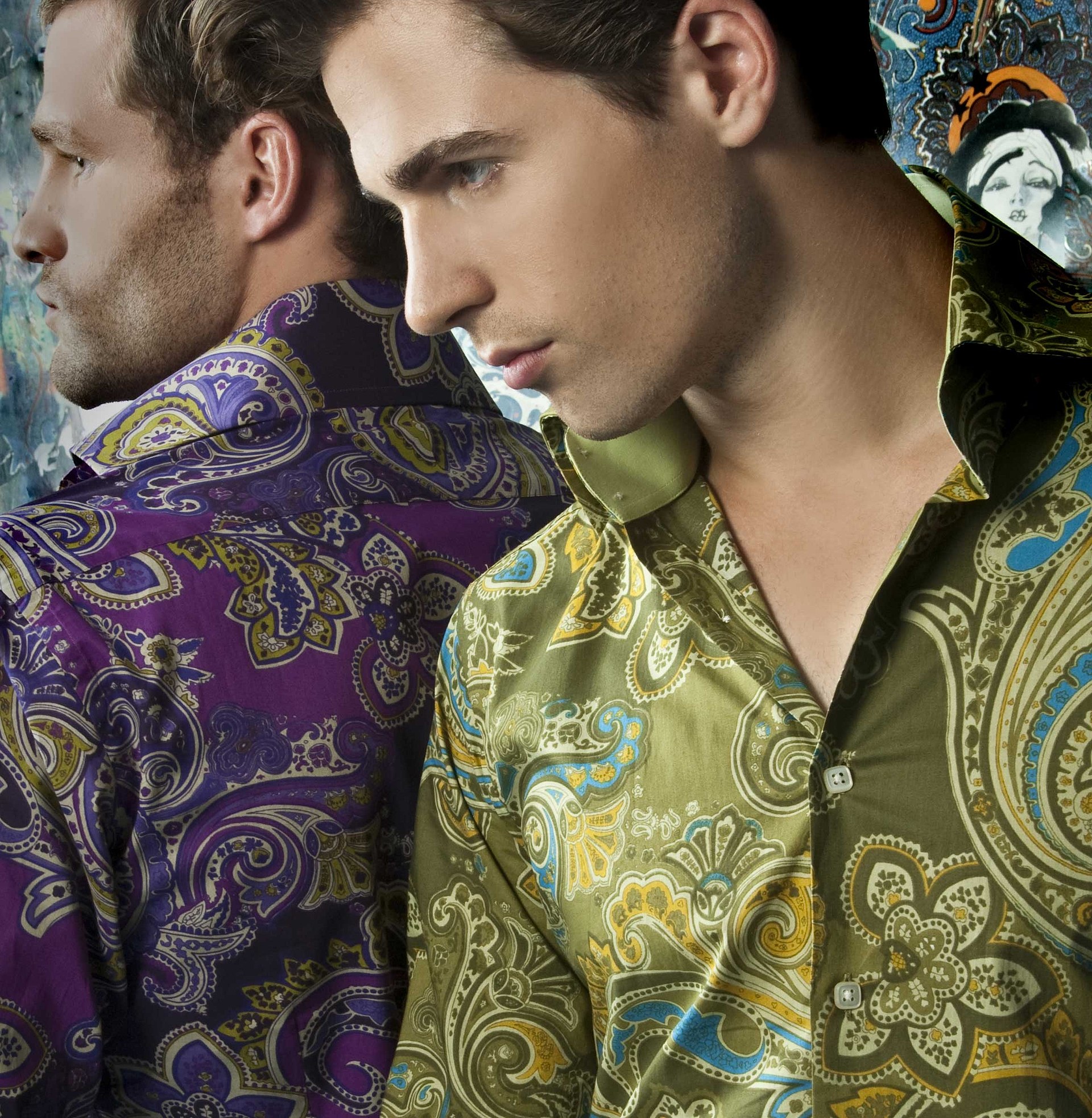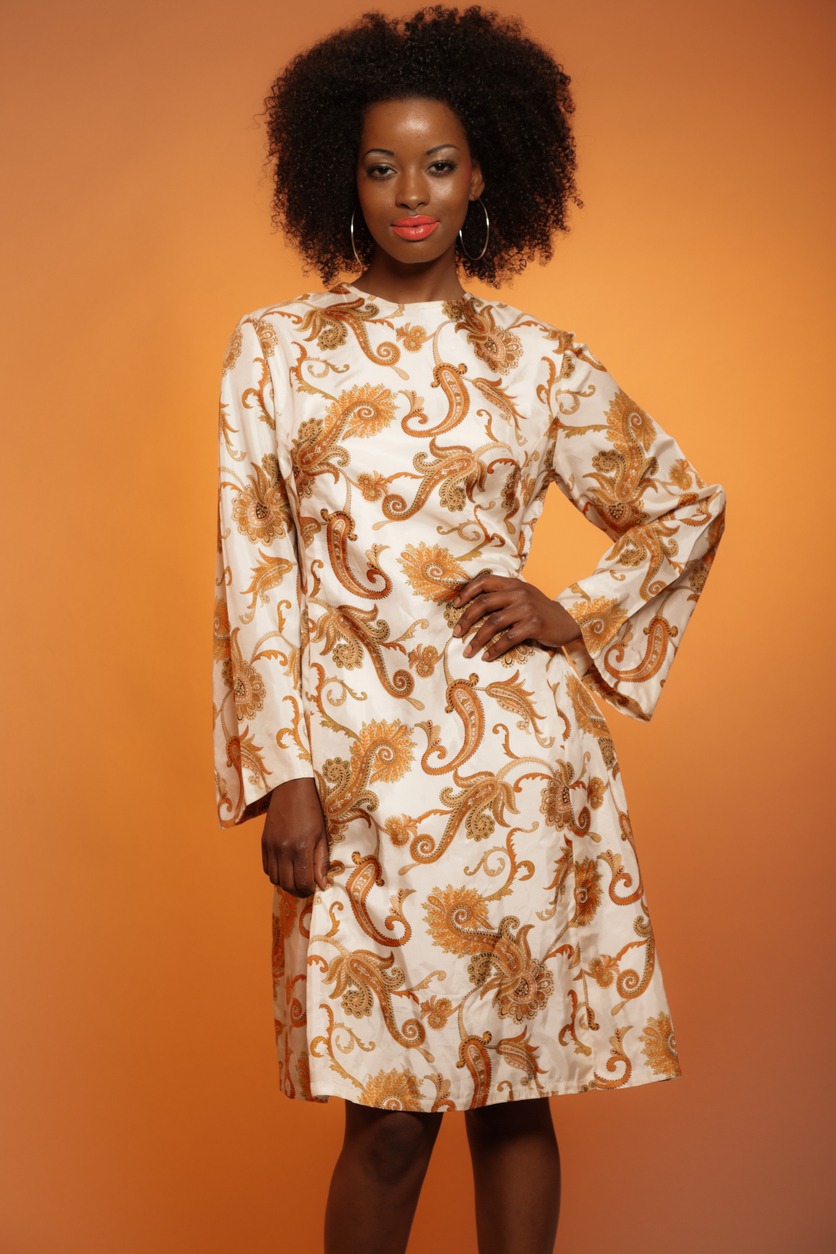In the 1960s, paisley patterns experienced a renaissance, becoming an emblematic design of the era’s fashion and popular culture. The paisley pattern, characterized by its distinctive swirling shapes and intricate details, has a rich history, tracing back centuries to South Asia. However, it was during the 1960s that the design made a significant impact on Western fashion, symbolizing a generation’s penchant for bold, non-conformist aesthetics. The influence of the bohemian and psychedelic movements of the time was evident in the widespread embrace of paisley, with its ornate, colorful motifs resonating with the era’s spirit of freedom and rebellion.
Paisley’s association with the 1960s is partly attributed to its adoption by influential figures in the music industry, such as the Beatles, who incorporated the pattern into their clothing, thus cementing its status in popular culture. Additionally, technological advancements in textile production enabled paisley’s complex designs to be replicated more easily and quickly, allowing for mass-market appeal and accessibility. As a result, paisley became a staple in the wardrobes of many, from shirts and dresses to scarves and ties, symbolizing the period’s break from the sartorial norms of previous decades.
Fashion’s cyclical nature has seen the paisley pattern reemerge periodically, yet the 1960s remain the defining era for this iconic design. It stood as a visual representation of the times: a fusion of traditional motifs with contemporary style, and a celebration of individualism in the face of society’s shifting paradigms. As such, paisley is more than just a pattern; it is a cultural artifact that encapsulates the essence of an era known for its radical change and vibrant expression.
Historical Origins of Paisley
The paisley pattern has a rich and varied heritage, tracing its origins to ancient Persia and India before becoming widely popular in the West during the 19th century. This intricate motif has traversed cultures, impacted trade, and carried significant cultural symbolism.
Persian and Indian Roots

The paisley design, known for its distinctive tear-shaped motif, has its early origins in Persian and Indian cultures. This motif, often called the boteh or buta, resembles a stylized floral spray combined with a cypress tree, which is a Zoroastrian symbol of life and fertility. In India, particularly in the Kashmir region, craftspeople wove fine Kashmir shawls from pashmina wool, often featuring elaborate versions of the paisley design.
European Adoption and Evolution

By the 19th century, the paisley pattern had spread to Europe due to the efforts of the British East India Company. The town of Paisley, Scotland, became emblematic of the pattern’s production outside of the East, not least for its adaptation and industrialization of shawl making which came to include the use of the Jacquard loom. These advancements allowed Paisley to rival cities such as Norwich and Edinburgh in the production of these textiles.
Global Influence and Trade
The exchange of goods along the Silk Routes brought the paisley motif to Central Asian countries and China, influencing local designs. European demand for the exotic paisley increased by the trade facilitated by the British East India Company. These trade networks made it possible for the paisley pattern to circulate globally, creating a blend of cultural influences in textiles.
Cultural Significance
Throughout its history, the paisley motif, occasionally referred to as “Persian pickles” by American quilters, has carried deep symbolism. It has been seen as a representation of eternity, the essence of life, and fertility. As it traveled through silk and trade routes, the motif was not just a trade commodity but also a conveyor of cultural interaction, often reflecting wealth and sophistication through the use of silver threads in some of the finest examples.
Paisley in 1960s Fashion and Design
The 1960s marked a significant turning point for the paisley pattern as it became synonymous with progressive fashion and the counterculture movement. This era saw the design evolving from traditional attire to a symbol of rebellion and creativity in fashion and design.
Association with the Beatles
The Beatles, icons of 1960s popular culture, played a pivotal role in elevating the status of paisley. They incorporated the paisley design into their clothing, most notably during the “Summer of Love” in 1967. Their endorsement transformed paisley into a fashion trend that appealed to both men and women, further solidifying its place in popular culture.
Psychedelic Movement Influence
Paisley’s intricate pattern and vibrant colors resonated with the psychedelic movement, influencing art, music, and the art nouveau movement. The design’s swirls and teardrop shapes became a visual expression of the era’s free-spirited ethos, prominently featuring in dresses, scarves, and bandanas, as well as the broader scope of home decor such as wallpaper, furniture design, and pillows.
Expansion Beyond Clothing
The influence of paisley extended beyond clothing, contributing to a comprehensive aesthetic that defined the 1960s. The jacquard loom, a significant innovation of the time, enhanced the ability to produce complex paisley patterns for home decor items. Paisley became more than just a pattern; it was a symbol of a generational shift in design philosophy that influenced not just the fashion industry, but lifestyle and culture as a whole.
Design Elements and Variations
The distinctive 1960s paisley patterns were characterized by innovation, an explosion of color, and adaptability across various materials and objects. This section explores the transition of traditional paisley motifs to modern interpretations, vibrant color palettes, and the pattern’s application beyond textiles.
From Traditional to Modern
Historically, the paisley pattern, with its complex teardrop shape resembling a tadpole, derived from traditional Persian and Indian origins. In the 1960s, this motif was reimagined, infusing elements from contemporary art movements, which resulted in bold, abstract designs. The conventional floral and curved figures often incorporated geometric twists and unconventional interpretations, including adaptations likened to swirls, dragon shapes, or cucumber forms.
Color and Fabric
The color schemes in 1960s paisley patterns ranged from earthy and muted tones to vivid, psychedelic hues. Fabrics such as cotton, silk, and wool served as canvases showcasing the intricate paisley designs. They not only adorned traditional scarves and shawls but also became central to the youth-driven fashion movement, printed or woven into everything from dresses to bell-bottoms.
- Typical Fabric Choices:
- Cotton: A popular choice for everyday wear.
- Silk: Elevated the paisley pattern in luxury garments.
- Wool: Used in paisley patterned scarves and blankets.
Paisley in Accessories and Decor
The reach of paisley patterns extended beyond personal attire into accessories and household decor. The motif was a favorite in jewellery designs, appearing in motifs on pendants and bracelets. Tattoos began to echo the paisley form, incorporating the teardrop and floral shapes into intricate body art. In terms of furniture design, paisley was embraced for its aesthetic value and exotic flair, often being used in upholstery to add a statement to an interior space.
- Miscellaneous Applications:
- Jewellery: Necklaces, rings, and brooches featuring paisley motifs.
- Tattoos: Paisley patterns becoming part of permanent body art.
- Furniture: Accent chairs and sofas dressed in paisley upholstery.
Paisley’s Role in Contemporary Fashion
Paisley has maintained a significant presence in high fashion, with luxury brands consistently reinterpreting its classic design. Designer labels utilize the pattern to articulate a blend of heritage and modernity.
High Fashion and Designer Brands
Saint Laurent and Gucci have prominently featured the paisley pattern, recognizing its timeless appeal and versatility. Etro, the Italian brand, has made paisley an integral part of its identity, often showcasing the design across its collections. These brands deploy paisley in various garment forms, from sophisticated dresses to the modern adaptation of accessories like bandanas, demonstrating the pattern’s adaptability.
- Saint Laurent: Incorporates paisley in its rock-inspired collections.
- Gucci: Uses the design in eclectic apparel, blending it with other patterns.
- Etro: Celebrated for consistently revitalizing paisley, Etro embeds the motif into its brand DNA.
Revivals and Modern Interpretations
The paisley pattern has experienced revivals spearheaded by contemporary designers and celebrities who appreciate its bohemian roots. Pretty Green, founded by Liam Gallagher, revisits paisley through a modish lens, reflecting the brand’s musical and cultural influences. Iconic figures such as David Bowie and Florence Welch have donned paisley, reinforcing its relevance in contemporary fashion. Designers like Biba and Bill Blass have occasionally brought paisley back into the spotlight, illustrating the design’s enduring legacy.
- Pretty Green: Adapts paisley for a contemporary audience with a nod to British music culture.
- David Bowie: Known for his unique style, incorporated paisley into his iconic wardrobe.
- Florence Welch: Often seen in paisley, showcasing the pattern’s feminine and flowy attributes.
Implications and Future of Paisley
Paisley has a dynamic past colored by cultural exchanges and fashion revolutions, suggesting its potential for renewed relevance and innovation.
Cultural and Artistic Prospects
The paisley pattern, with roots in Persian and Indian cultures, holds significant symbolic value that translates across time. As a design, it carries connotations of life and eternity, stemming from its resemblance to a sprouting plant or a pine cone. In the 1960s, paisley became a visual shorthand for psychedelic style, an emblem of popular culture and the “Summer of Love.” Its continuous presence in fashion underscores its adaptability and capacity to resonate with successive generations.
- Forecasting Trends: Designers often look to the past to inspire future collections, with paisley patterns poised to merge traditional motifs with modern esthetics.
Sustainability and Innovation
In the realm of textiles, sustainability has become increasingly pivotal. The production of paisley-patterned fabrics, which historically involved intricate craftsmanship, now confronts the challenge of balancing heritage with sustainable practices.
- Material Shifts: A push towards eco-friendly materials like organic cotton or recycled polyester can modernize paisley production.
- Technological Integration: Advancements in digital textile printing have the potential to improve the pattern’s sustainability footprint while maintaining its intricate appeal.
Paisley in Digital and Media
Digitization paves way for new forms of expression, enabling paisley patterns to thrive beyond traditional textiles. In the digital sphere, the paisley design can be a versatile element for various applications.
- Virtual Presence: Presence in digital media may rejuvenate the paisley pattern within virtual reality or video-game skins.
- Digital Marketplace: The ease of accessing design archives online bolsters the potential for paisley prints in customizable fashion.




